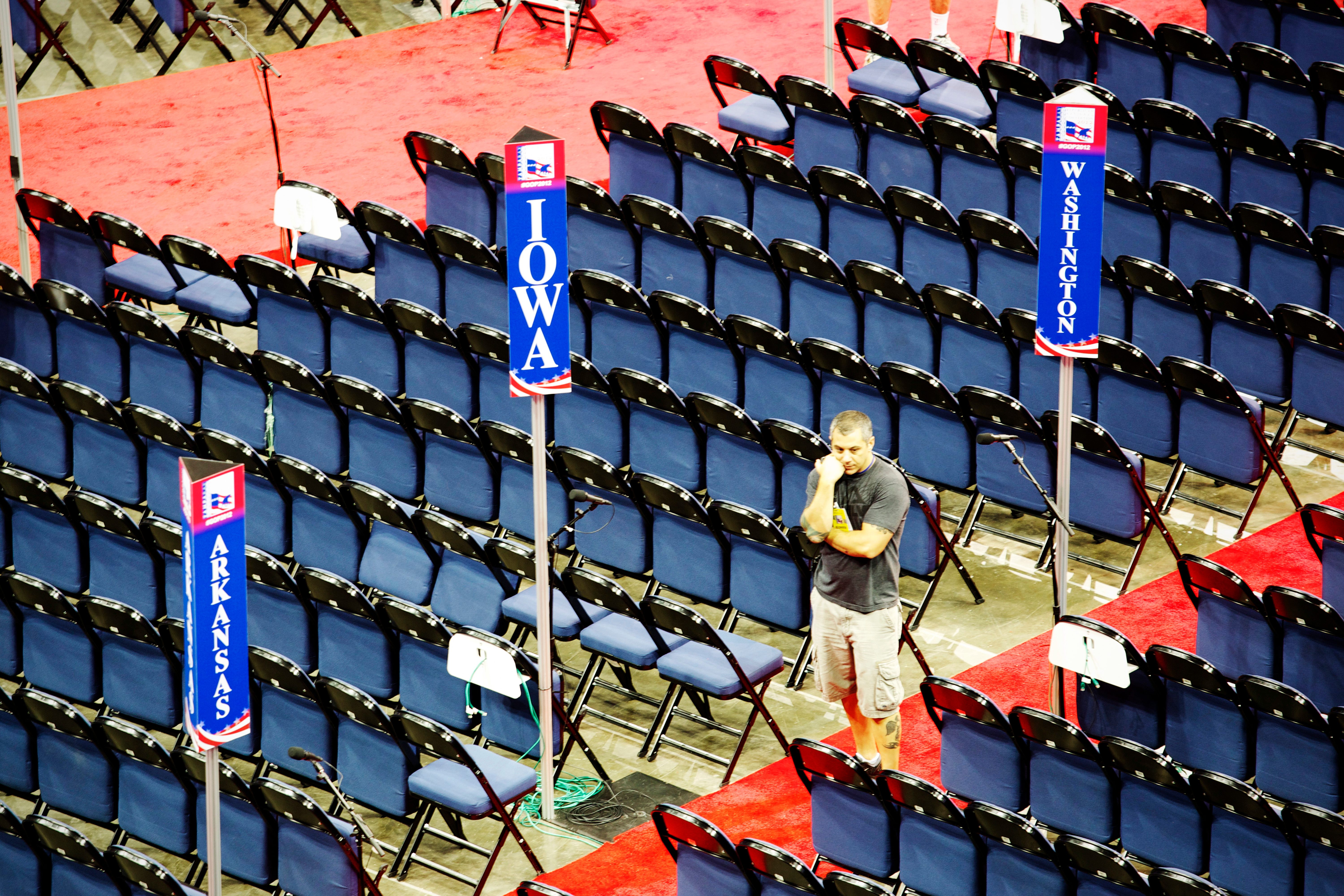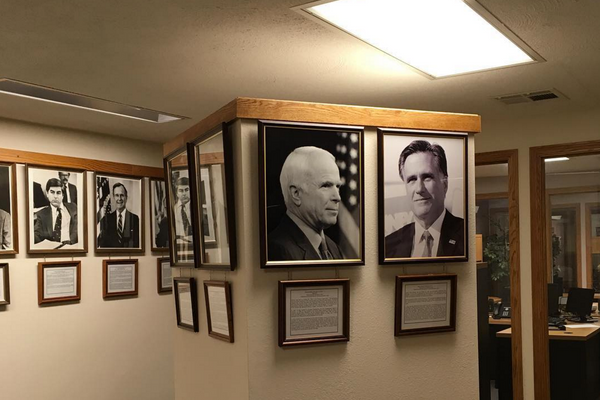Decoding the 2016 Republican National Convention Seating Chart
The seating arrangements this year focus more on past primaries than the upcoming general election.

Setting up the 2012 Republican National Convention. (Photo: Mallory Benedict/PBS NewsHour / CC BY-SA-2.0)
The Republican National Convention kicks off tomorrow, and with not a moment left to spare, convention organizers have released the official delegate seating chart for the event, designating which states’ delegates get front-row seats and who is left to languish in the far corners of the venue.
Every convention, politicos dive into the arrangements, looking for clues on the power rankings of various people and states. Like so many other aspects of the 2016 election, the RNC’s seating arrangements break with political convention, seemingly catering more to the presumptive nominee’s desire to pay back primary race slights than currying favor for the general election battle ahead.

The official 2016 RNC seating chart, released yesterday. (Illustration: 2016 Republican National Convention)
As political observers have been quick to note, the arrangements appear to be chiefly determined by who won the state’s Republican primary. States won by nomination winner Donald Trump, like New York and California, received prime seating for their delegates, while states that voted for other nominees—including Texas, home state of bitter rival and convention speaker Ted Cruz—are stuck in the nosebleeds.
This might sound like overreach, but it’s like the seating chart for a wedding, full of friends, enemies, and just plain unbearable people, all painstakingly arranged in order to stroke the right egos and send some pointed messages.
Trump is not just rewarding states he swept; he wants unfriendly delegates, like from Ohio, away from stage. https://t.co/vbq5Id2G1U
— Trip Gabriel (@tripgabriel) July 17, 2016
Normal nominees don’t do this. They’re afraid of demonstrations on the floor. https://t.co/5CeClquCbg
— Patrick Ruffini (@PatrickRuffini) July 17, 2016
RNC seating chart revealed, Texas and Ohio hardest hit. pic.twitter.com/bhkf3HpJZo via @CelesteKatzNYC
— southpaw (@nycsouthpaw) July 16, 2016
Judging by past conventions, the seating choices made for this year’s Republican convention are a decided break from norms. Take, for example, the 2008 Democratic National Convention. A New York Daily News analysis of the seating chart that year described it as “pure politics,” noting that key battleground states received prime seats, while states assumed to be a lost cause for Democrats sat in the back. The takeaway was a clear sign that “[e]very word, thought and gesture by the Dems between now and Election Day will be focused on swing states and independent voters.”
It’s worth noting, too, that this unifying approach was in spite of a fiercely fought contest for the Democratic nomination; the Democratic primaries fielded eight candidates in 2008.
The 2008 DNC chart also conveys a clear focus on the general election, which was shared by the 2012 RNC seating chart. In a VTDigger article analyzing Vermont’s participation in the 2012 Republican convention, Vermont delegation chairman Craig Bensen explained that seating was generally determined by “how red, blue, or swing the state is for the presidential election.” That year, Vermont—generally relegated to “a corner in the dark under the stairs”—saw a slight improvement in their view, ending up to the far right of the stage with Kansas and Hawaii, perhaps as a nod to 2012 candidate Mitt Romney’s New England ties.
At the 2016 RNC, swing states like Pennsylvania, Virginia, and even convention host Ohio have been given less-than-ideal seats, even when Trump won their primaries, while solidly Democratic states New York, New Jersey, California, and Connecticut, among others—are up-front and center for speeches from Trump’s family members, Republican leadership, and soap opera star Antonio Sabato, Jr.







Follow us on Twitter to get the latest on the world's hidden wonders.
Like us on Facebook to get the latest on the world's hidden wonders.
Follow us on Twitter Like us on Facebook